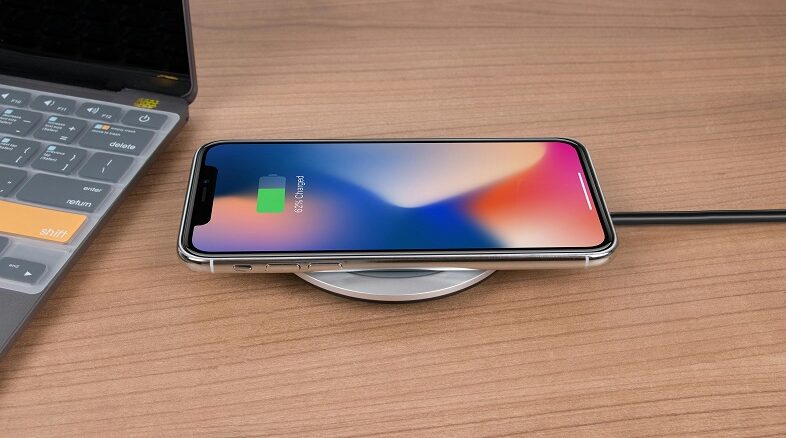
The Shift Toward Wireless Charging in 2025 Is No Longer Optional—It’s the New Standard in Premium Smartphones
July 3, 2025: As of 2025, wireless charging has evolved from a niche luxury to a standard feature in flagship smartphones. What was once considered futuristic is now essential, driven by consumer demand for seamless, cable-free convenience. Wireless charging in 2025 is no longer a bonus—it’s expected. Whether you’re using the latest iPhone or a high-end Android device, chances are it supports some form of wireless power. So what’s fueling this widespread adoption among premium smartphones?
Let’s explore the driving forces behind the wireless charging revolution in high-end mobile devices—and address some important considerations for users.
1. Consumer Demand for Seamless, Cable-Free Convenience
Modern consumers increasingly value convenience and minimalism. Wireless charging supports both by eliminating the need for tangled cables and plugs. Placing a device on a charging pad is simpler and faster than dealing with connectors—especially as more phones reduce or remove physical ports altogether.
This cable-free experience pairs well with smart furniture, office desks, and car dashboards, where wireless charging pads are becoming integrated features. Flagship smartphones, in turn, must keep pace with this ecosystem shift.
2. Alignment with Premium Design Philosophy
Flagship phones focus heavily on sleek design and durability. Wireless charging helps manufacturers eliminate USB ports, enabling more water- and dust-resistant enclosures. This allows for stronger structural integrity, fewer moving parts, and slimmer form factors—all essential features in premium phones.
By removing the charging port, brands also gain more flexibility to expand battery size or internal components, helping devices maintain performance while getting slimmer and more efficient.
3. Competitive Differentiation in a Crowded Market
As smartphone specifications converge across the industry, features like wireless charging help differentiate premium models. Many high-end Android phones now offer fast wireless charging capabilities—some even reaching 50W speeds—making them competitive with wired charging.
In saturated markets like China and South Korea, where innovation and speed dominate buying decisions, high-powered wireless charging is an expected feature in flagship devices.
4. Apple and Samsung’s Ecosystem Strategy
Brands like Apple and Samsung have deeply integrated wireless charging into their product ecosystems. Apple’s MagSafe system allows iPhones to align magnetically with chargers and accessories for better efficiency and user experience. Samsung, on the other hand, includes Wireless PowerShare, which enables Galaxy phones to charge other devices like earbuds or smartwatches wirelessly.
These features go beyond charging—they help build a seamless multi-device environment that keeps users loyal to their respective ecosystems.
5. Supporting the Smart Home Vision
Smart home technology is expanding rapidly, and wireless charging plays a key role in this growth. Devices that charge wirelessly can be placed in smart lamps, nightstands, or car consoles without the need for repeated plugging in. This fits perfectly into homes and offices designed to anticipate user needs with automation and voice assistance.
Flagship smartphones with advanced wireless charging capabilities are better suited to adapt to this intelligent infrastructure.
6. Environmental and Regulatory Impact
With growing concerns about e-waste and redundant accessories, regulators in regions like the European Union are pushing for universal charging standards and port reductions. Wireless charging, especially with the adoption of the Qi standard, supports this by allowing one pad to charge various compatible devices.
Additionally, many smartphone brands are removing chargers from their packaging to reduce carbon footprints, further encouraging wireless charging adoption among users.
7. Enabling the Port-less Smartphone Era
Wireless charging is a stepping stone toward the fully port-less smartphone—a concept that’s already being tested by innovators like Xiaomi and Vivo. As wireless data transfer, cloud storage, and eSIMs become standard, physical ports become less necessary.
Flagship smartphones are leading the way in this evolution, offering high-performance wireless charging to prepare users for a seamless, wireless future.
Key Considerations for Users
While most flagship smartphones now support wireless charging, it’s important to note that not all devices are compatible. Phones must include a built-in charging coil, typically found in mid- to high-end models. Users should verify compatibility before purchasing a wireless charger.
There are also a few disadvantages. Wireless charging can be slower than wired options and can generate heat during operation. It also requires careful alignment on the charging pad, as misalignment may result in incomplete charging. Additionally, using the phone while it’s charging wirelessly is less convenient compared to wired charging.
That said, charging a phone wirelessly is generally safe and reliable when using certified chargers. It’s an ideal option for overnight use or topping off your battery during the day.
To use wireless charging, most smartphones require no manual activation—it’s typically enabled by default. Users simply place their device on a compatible Qi charging pad, and charging begins automatically. For advanced features like reverse wireless charging, users may need to enable the setting through the device’s battery or power menu.
Conclusion: Wireless Charging Is the Future of Flagship Devices
Wireless charging in 2025 is no longer an optional extra—it’s central to the identity of flagship smartphones. As the technology becomes faster, smarter, and more efficient, users can expect a future with fewer cables and greater freedom.
For manufacturers, embracing wireless charging in 2025 isn’t just about convenience; it’s about future-proofing their devices, supporting sustainability, and building loyalty through ecosystem integration. For consumers, the message is clear: the era of plugging in is rapidly coming to an end.
Pic credit: Pexels|Rann Vijay

